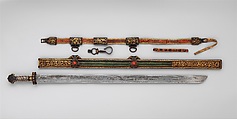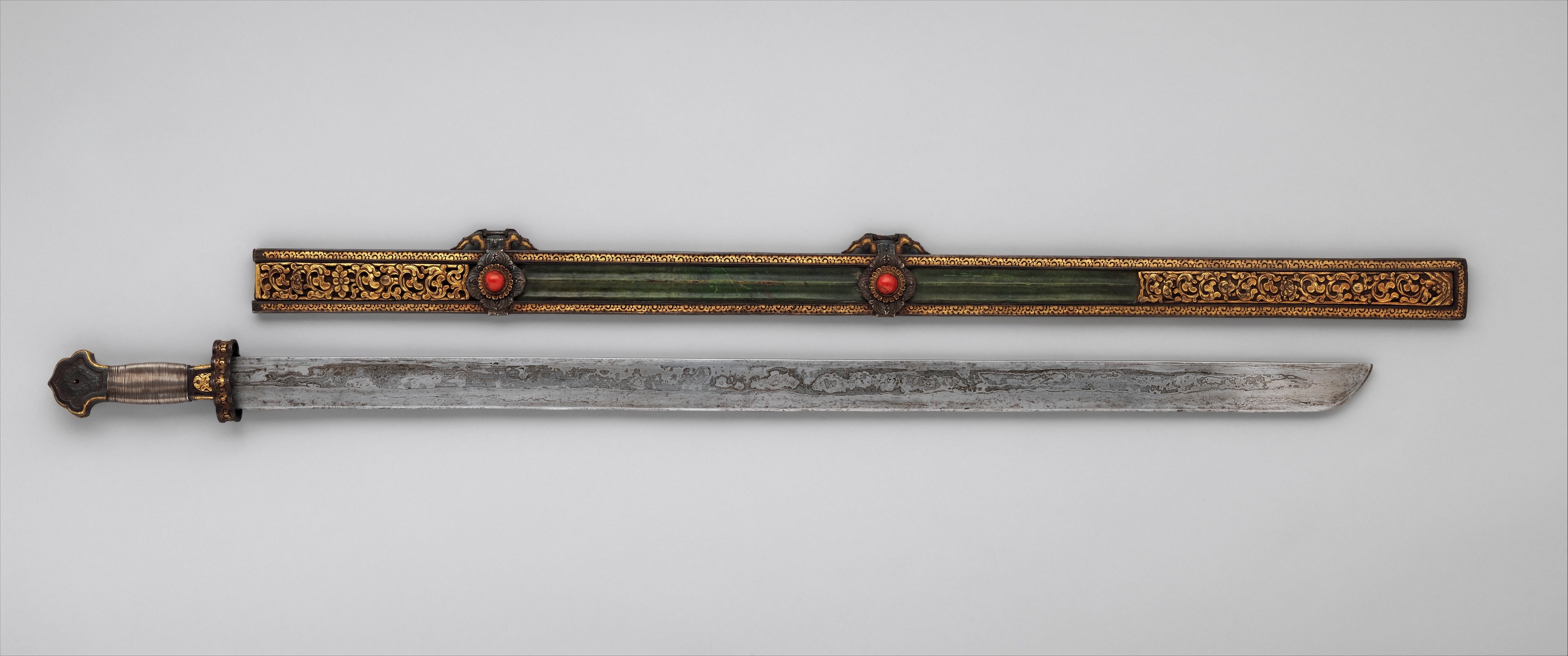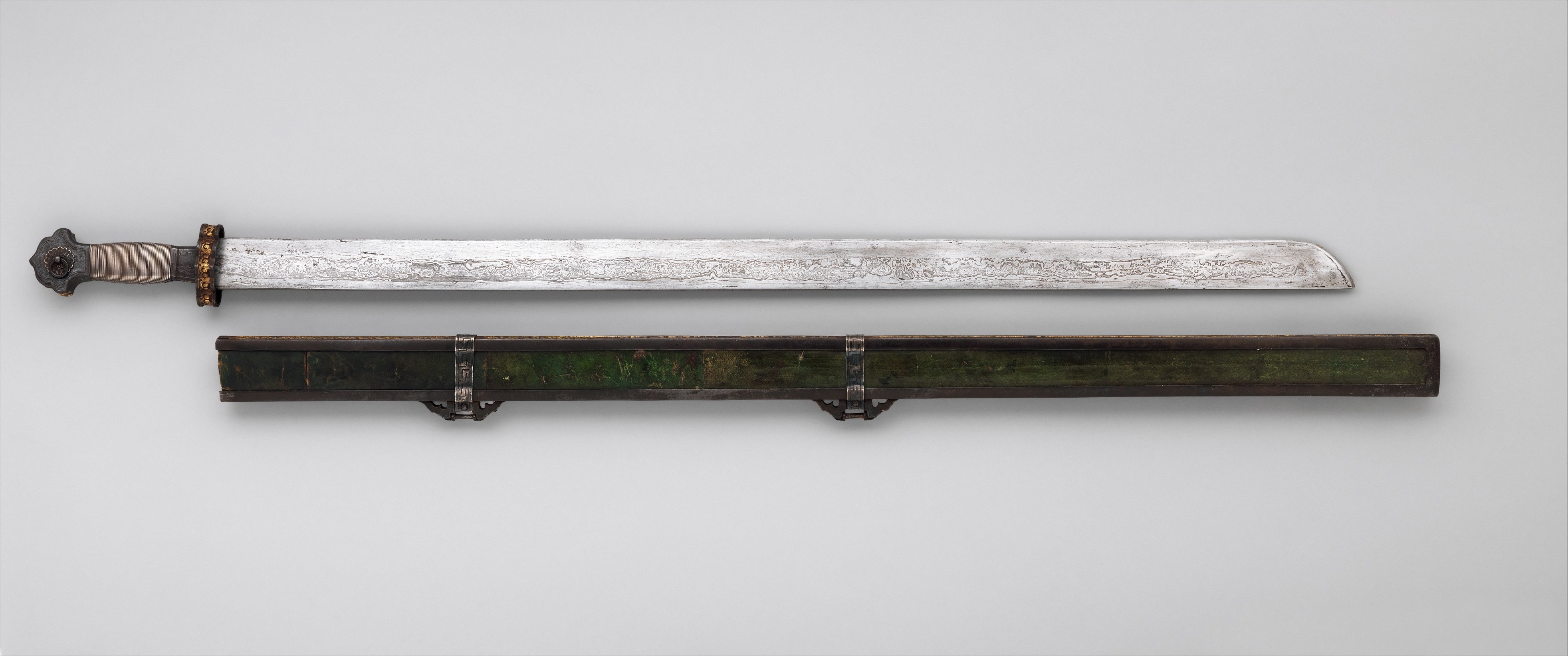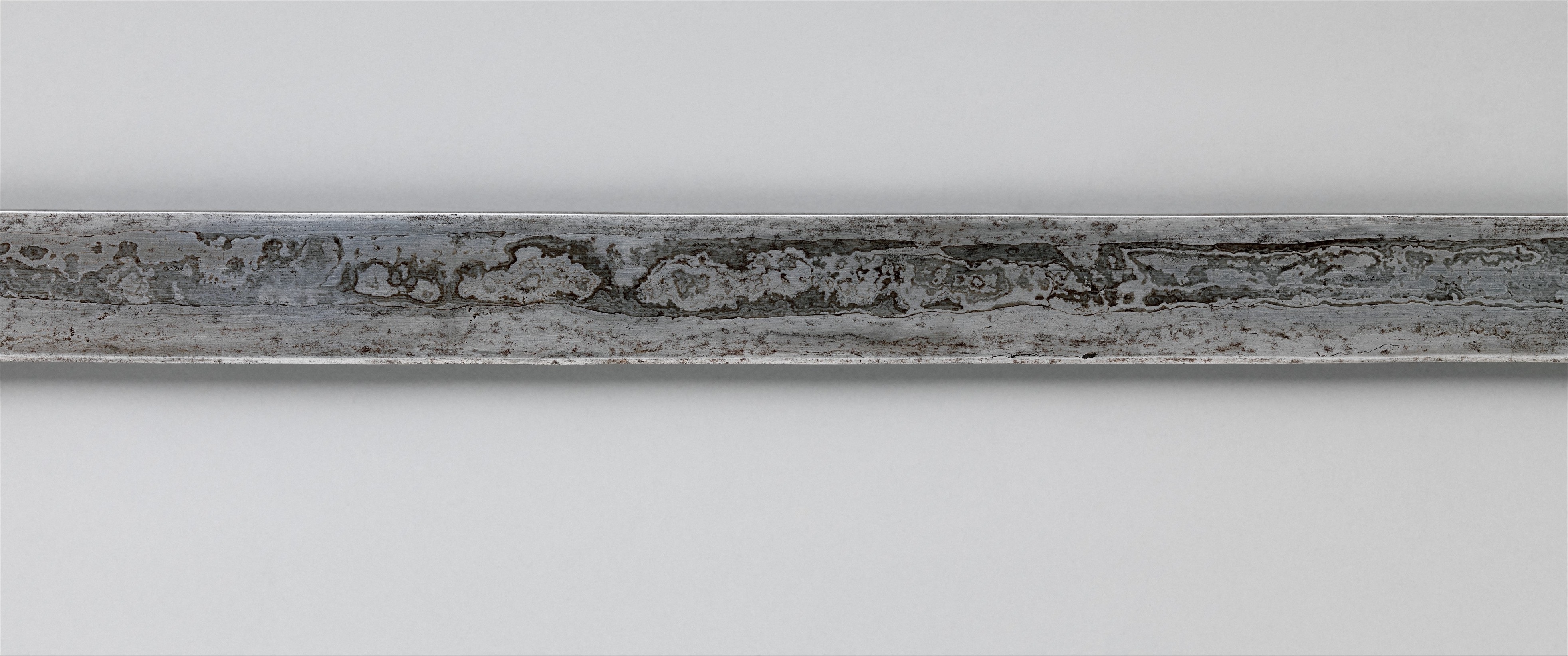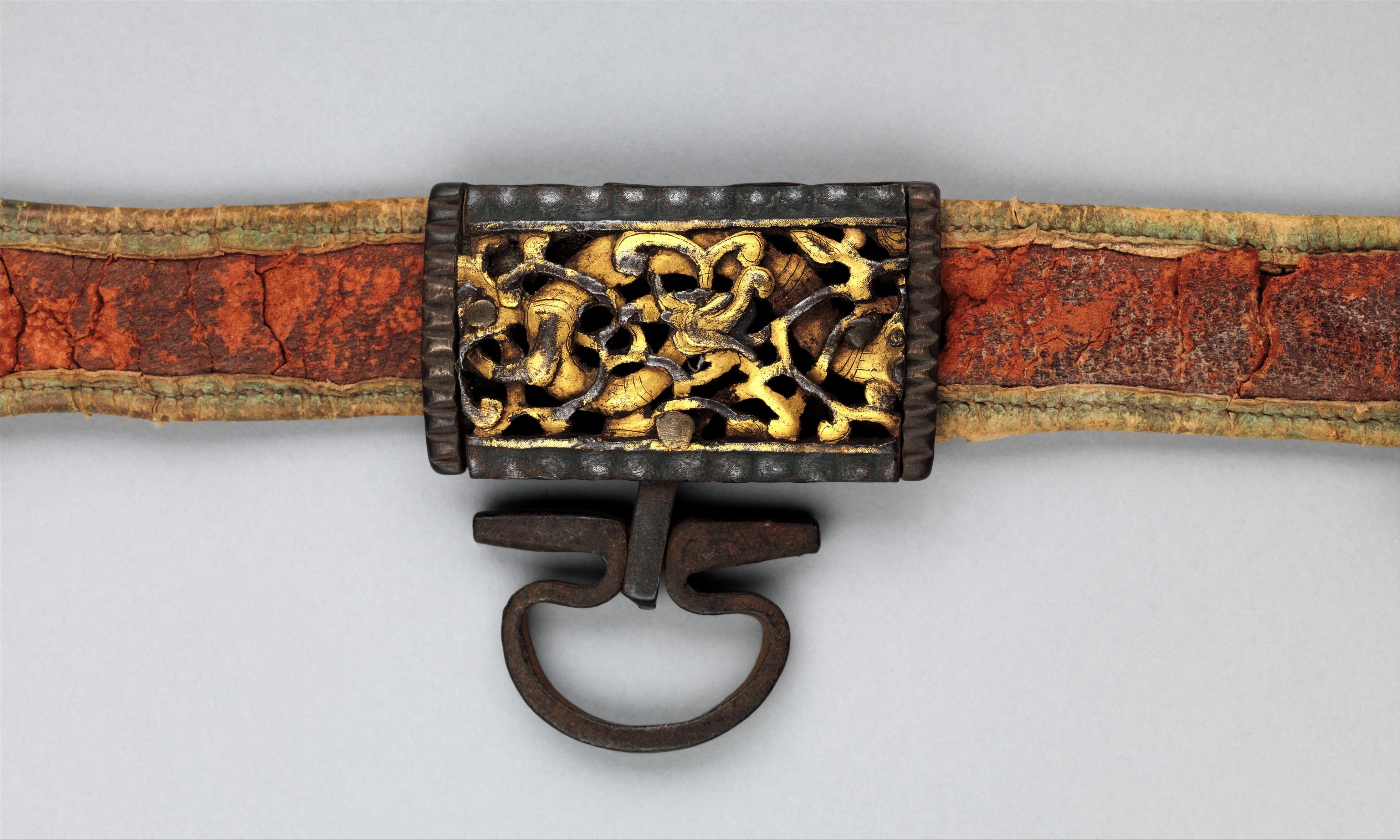Sword, Scabbard, and Belt Hook
Not on view
The sinuous wood-grain pattern running down the center of the blade is among the most intricate and beautiful on any Tibetan sword in existence. The gold-and-silver decoration of the hilt and scabbard is also of the highest quality for the period. Lieutenant Edward Henry Lenon (1838–1893) captured the sword in China at the Battle of North Taku Fort on August 21, 1860, during the Second Opium War. Lenon was awarded the Victoria Cross for his actions in this battle.
This sword is important for the quality and distinctiveness of its pattern welded blade; as an excellent example of a Tibetan sword made to be worn suspended from a sword belt in the Chinese fashion; for its overall state of preservation; and for its interesting provenance. The pattern welding technique used in the forging of the vast majority of traditional Tibetan blades results in a characteristic surface appearance consisting of a series of alternating light and dark v-shaped lines referred to as a "hairpin" pattern. This example is exceptional among the few Tibetan blades that vary from this norm. In addition, the great length of the blade and the style of mounting made to be worn in the Chinese fashion associate it with a small group of similarly outfitted Tibetan swords, all with highly decorated hilts and scabbards.
The hilt consists of an iron trefoil-shaped pommel with broad, flat sides; a grip wrapped horizontally in plain silver wire; an iron collar at the base of the grip; and an iron guard with rounded ends, cusped edges, down turned sides and an open, hollow interior. The sides of the pommel and the grip collar are damascened in gold (gold wire burnished onto to a finely crosshatched ground) with short repeating diagonal bands containing a stylized swastika pattern. In the center of the back of the pommel there is a small iron ring attached to a circular petal-shaped silver base. The front of the pommel is blank, but was originally decorated with a coral or turquoise stone set in silver. In the center of the grip collar there is an inset gilt copper plaque with a symmetrical leaf motif. The top of the guard is decorated with a recessed band and the sides are chiseled with a repeating trefoil pattern; both the band and the trefoil pattern are damascened in gold. The straight single-edged blade has a short oblique tip and a prominent band of variegated pattern welding running from the base of the blade to approximately two inches from the tip.
The long rectangular scabbard has an iron frame covering the full length of both sides and the bottom. A recessed border runs the entire length of the front of the frame and is chiseled with a repeating scroll motif damascened in gold. The sides and bottom of the frame are damascened in gold with short repeating diagonal bands containing a stylized swastika pattern. The back of the frame is undecorated. The top six inches and the bottom nine inches of the front of the scabbard are covered by an inset pierced gilt copper panel of lush scrolling foliage and blossoms. Between the panels the wooden core of the scabbard is covered in green leather over two parallel concave channels running lengthwise on either side of a central ridge. The entire length of the back of the scabbard is covered in green leather. Two iron suspension brackets, chiseled and damascened in gold, are attached to the top edge of the frame for the straps from the sword belt. Each bracket has a short pivoting crossbar in the center. A decorative band wraps around the scabbard at each bracket and comprises a hemispherical coral bead set in a gilt copper circular bezel edged with petals and on top of a leafy silver base. The back strap is incised with a simple Greek key motif.
The matching belt hook is made of iron highlighted with gold damascened decoration. It comprises a small buckle attached to a swivel hook that rotates at the top of a short rectangular slot, which is hinged to a large open loop.
Due to rights restrictions, this image cannot be enlarged, viewed at full screen, or downloaded.
This artwork is meant to be viewed from right to left. Scroll left to view more.
